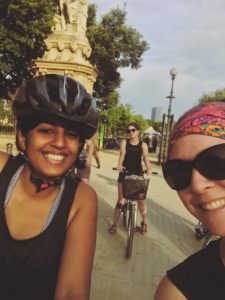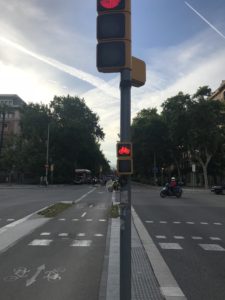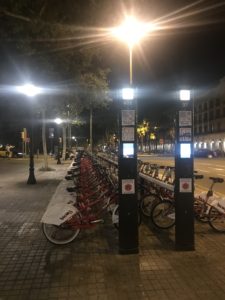Recently an article was published labeling Iowa as unsafe for cycling. Iowa Bicycle Coalition published a rebuttal, challenging the accuracy of the article, highlighting some relevant points and discrepancies, but also noting that the state does need to pay attention to cyclist safety. Regardless, this type of article should give cyclists, public officials, advocacy groups, and city planners pause.
Specifically, all of these groups should be asking, “What can be done to prevent Iowa from ending up on a list like this in the future?”
I spent a month exploring and navigating Barcelona, Spain by bicycle, using it as my primary mode of transportation while on an adventure with Unsettled. I learned and observed many things that allowed this large cosmopolitan metro to be bicycle friendly, ideas that can be adopted and incorporated in any community.
People cared about and looked out for each other.
 Those driving in Barcelona paid careful attention to traffic control devices and there seemed to be a general care and concern for the well being of others from all users. Cyclists moved for pedestrians, young children learned to ride using the bike lanes, and generally the flow of traffic was predictable. Keep in mind that in Barcelona most of the dogs are off leash and ‘bike lanes’ were actually for cyclists, skateboarders, scooters, and any other wheeled means of transportation (including the ‘e’ versions) and large numbers of tourists were present in many areas of the city.
Those driving in Barcelona paid careful attention to traffic control devices and there seemed to be a general care and concern for the well being of others from all users. Cyclists moved for pedestrians, young children learned to ride using the bike lanes, and generally the flow of traffic was predictable. Keep in mind that in Barcelona most of the dogs are off leash and ‘bike lanes’ were actually for cyclists, skateboarders, scooters, and any other wheeled means of transportation (including the ‘e’ versions) and large numbers of tourists were present in many areas of the city.
There were ample off street places to ride your bike/scooter/skateboard and clear signage.
 Much of the riding was on designated off street bike lanes, physically separated from traffic by barricades or medians. Traffic signals were present specifically for those using the facilities, designating when it was appropriate to ride or walk (this didn’t necessarily occur at the same time). Signage was clear and easy to understand, and included painted arrows in the lanes and posted signs. One major intersection even included a bicycle specific roundabout.
Much of the riding was on designated off street bike lanes, physically separated from traffic by barricades or medians. Traffic signals were present specifically for those using the facilities, designating when it was appropriate to ride or walk (this didn’t necessarily occur at the same time). Signage was clear and easy to understand, and included painted arrows in the lanes and posted signs. One major intersection even included a bicycle specific roundabout.
It didn’t matter what type of non car vehicle you were using as all integrated into the system.
This article by City Lab describes “little vehicles” in detail, I would highly recommend taking the time to read the full piece.
The bicycle lanes in Barcelona had it all, each type of “little vehicle” listed in the article was being used by visitors and residents to navigate the city, get to work, transport goods (and people), and in some cases, even for recreation. During my time, I observed no instances of recreational supremacy (my vehicle is superior to your vehicle), no issues between the ‘e’ versions and fully human powered versions, and all of the users were able to efficiently and sustainably navigate their routes.
There were plenty of rentals, bike share options & parking for bikes.
The bike share options in Barcelona differed drastically from those I experienced in many metros in the US, mostly due to the fact that docking stations were located close to residential neighborhoods for residents to use as transportation, instead of simply focusing on visitors in the urban core or destination locations. There were other options for visitors, ranging from daily rentals, to mobile sharing apps, and nearly everywhere I rode had a bike rack located within a block of my destination. Others in my group used all of the types available, with no version being better or easier.
I didn’t see any crashes or witness any aggressive behavior.
I only need to open my social media feed to see news of a cyclist/vehicle crash or ride down the street in the US to get hassled by a driver. My experience in Barcelona was much different; I was witness to zero crashes and no drivers or other users hassled me while on my bike. I also rode more often and more miles, traversing all over the city, including some very densely populated tourist destinations, during a wide variety of hours.
Barcelona has created a sustainable equation of incorporating alternative transportation, namely biking, into the city infrastructure and way of life. Many of these ingredients can be incorporated into community planning and development, creating a place that no longer is likely to end up on the list of most dangerous places for cyclists.
